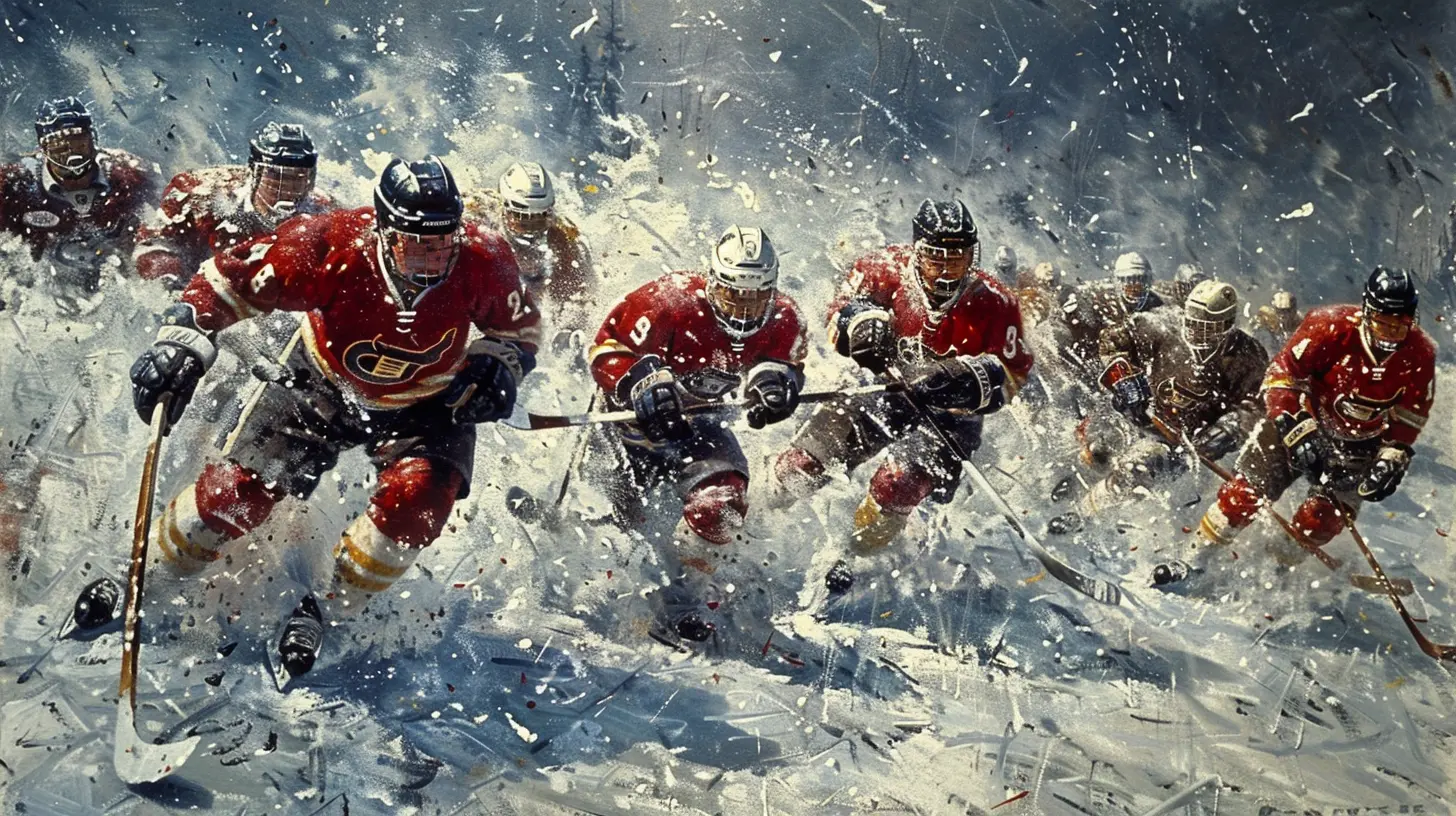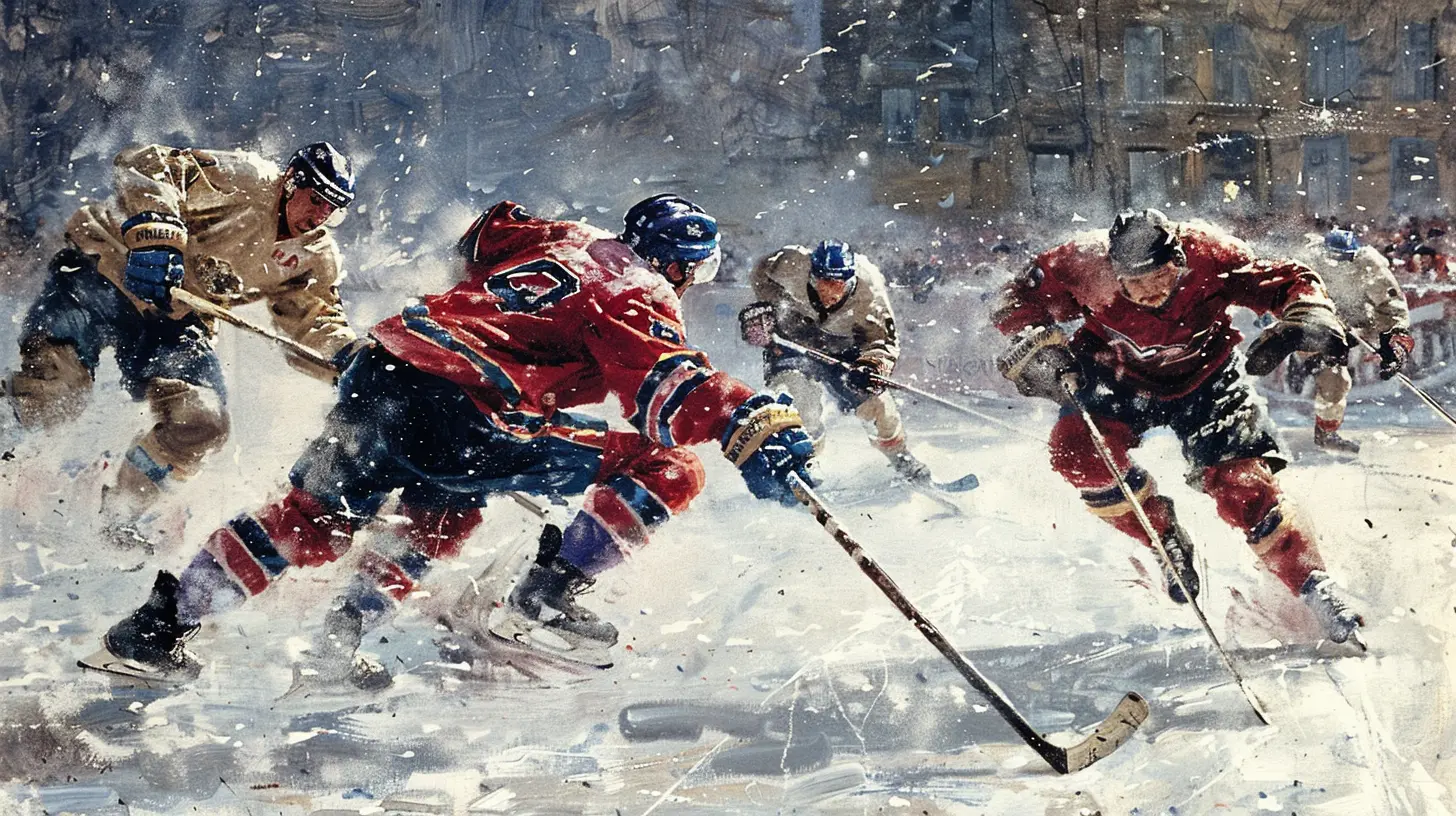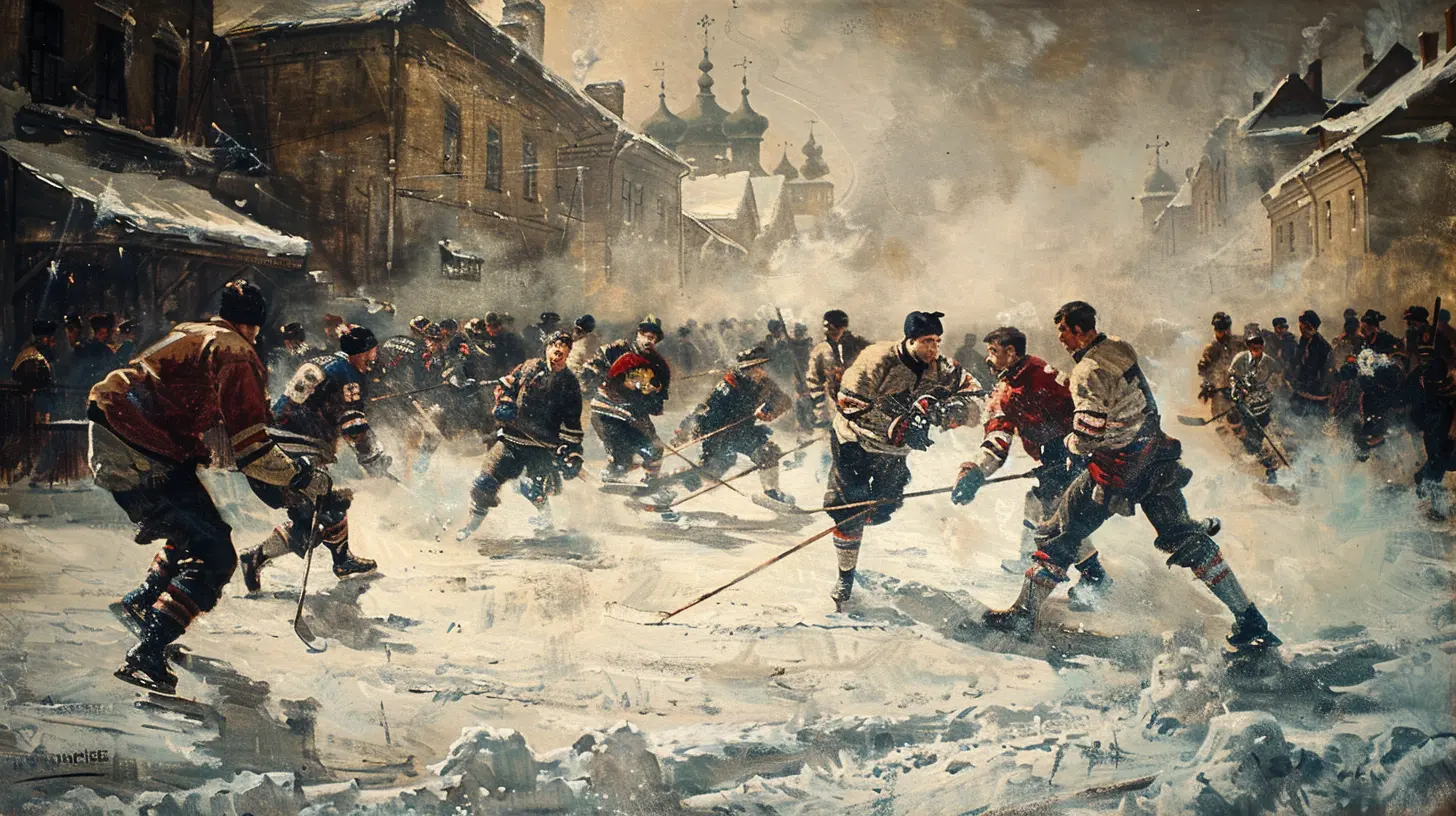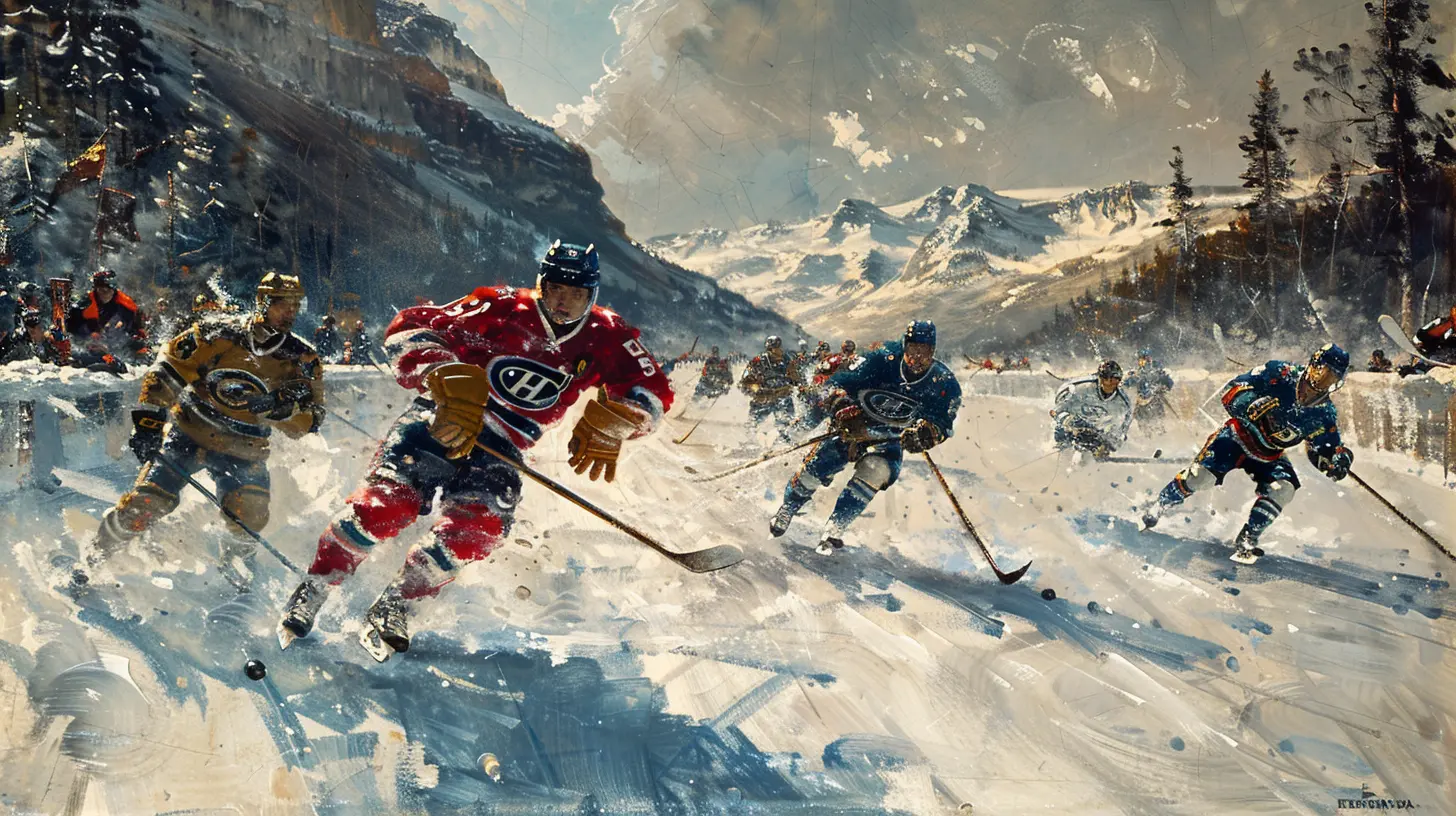The Founding of the NHL: The Origins of Professional Ice Hockey
4 June 2025
Ice hockey. Just hearing those two words can instantly make you think of the thrill of the game, the sound of skates cutting through ice, and the roar of the crowd as the puck hits the back of the net. But have you ever wondered how professional ice hockey got its start? More specifically, how the National Hockey League (NHL), the premier ice hockey organization in the world, came to be? Let's take a trip down memory lane and explore the fascinating origins of the NHL and the evolution of professional ice hockey.
The Early Days of Ice Hockey
Before we dive into the creation of the NHL, we must first understand the early roots of the sport itself. Ice hockey, as we know it today, has its origins in the frozen ponds and lakes of Canada. While there are debates about who exactly "invented" hockey, most historians agree that the game we recognize today started to take shape in the mid-19th century.During these early days, ice hockey was far from the organized, professional sport it is today. It was more of a recreational pastime played by amateurs. The games were rough, chaotic, and lacked the rules and structure that modern hockey fans are used to. Imagine a bunch of people on a frozen lake, with sticks in hand, chasing a wooden puck — that was the essence of early ice hockey.
The Montreal Influence
In the late 1800s, hockey began to gain traction in Montreal, which quickly became the hub for the sport. Montreal's McGill University is often credited with formalizing the first set of hockey rules in 1875. These rules helped transform ice hockey from a chaotic free-for-all into a more structured, organized game. And with that, the seeds of professional ice hockey were planted.
The Rise of Professional Ice Hockey
As the popularity of hockey grew, so did the number of organized leagues. The first hockey league, the Amateur Hockey Association of Canada (AHAC), was formed in 1886. However, the players were strictly amateurs, and the idea of "professional hockey" had not yet been fully embraced.By the early 1900s, things began to change. The sport's physical demands and the growing interest from fans meant that players were starting to expect compensation for their efforts. This led to the creation of professional teams and leagues, though they were often short-lived due to financial instability and the lack of a unified governing body.
The National Hockey Association (NHA)
In 1909, a group of businessmen in Montreal formed the National Hockey Association (NHA), which would become the direct predecessor to the NHL. This was a significant moment in the history of professional ice hockey. The NHA introduced many of the concepts that are now fundamental to the sport, such as the blue line and the division of the rink into three zones.The NHA was also one of the first leagues to truly embrace professional players. Teams like the Montreal Canadiens, one of the original members of the NHA, started paying players to compete at a high level. For the first time, hockey players could make a living from their passion. However, while the league enjoyed some early success, it was plagued by internal disputes and financial hardships.
The Birth of the NHL
In 1917, after years of disagreements within the NHA, particularly with one of its owners, Eddie Livingstone, a decision was made to create a new league. On November 26, 1917, representatives from four Canadian teams met at the Windsor Hotel in Montreal and made a decision that would forever change the landscape of professional hockey — they formed the National Hockey League (NHL).The Founding Teams
The NHL was originally made up of four teams:1. Montreal Canadiens – Already an iconic team in the NHA, the Canadiens were a natural fit for the new league.
2. Montreal Wanderers – Another Montreal-based team, though they would not last long in the NHL.
3. Ottawa Senators – A powerhouse team at the time, the original Senators were a cornerstone of the new league.
4. Quebec Bulldogs – Though they wouldn't play in the NHL's inaugural season due to financial difficulties, the Bulldogs were one of the founding members of the league.
Interestingly, the original lineup only included Canadian teams. The NHL was initially a Canadian affair, and it wouldn’t be until later in the 1920s that American teams would join the league.
The Early Struggles of the NHL
Like many new ventures, the NHL faced significant challenges in its early years. The league’s first season was plagued by financial problems, and the Montreal Wanderers had to fold after their arena burned down just six games into the season. The league was left with only three teams for the remainder of that year.Despite these early struggles, the NHL persevered. Its first Stanley Cup champion was the Toronto Arenas in 1918, a precursor to the modern-day Toronto Maple Leafs. The NHL was slowly but surely starting to build a name for itself.
Expansion to the United States
By the 1920s, ice hockey was no longer just a Canadian obsession. The sport had started to gain traction in the United States, particularly in northern cities with colder climates. Recognizing the potential for growth, the NHL began to expand south of the border.The Boston Bruins – The First U.S. Team
In 1924, the NHL made its first major move into the U.S. market by adding the Boston Bruins to the league. This was a pivotal moment in the history of the NHL. The Bruins' success in Boston proved that professional hockey could thrive in the United States, setting the stage for future expansion.By the late 1920s, the NHL had added several more U.S. teams, including the New York Rangers, Chicago Blackhawks, and Detroit Red Wings. These teams would go on to form the core of what would later be known as the "Original Six" — the six teams that dominated the NHL from 1942 to 1967.
The Original Six Era
From 1942 until the league’s expansion in 1967, the NHL consisted of just six teams: the Montreal Canadiens, Toronto Maple Leafs, Boston Bruins, New York Rangers, Chicago Blackhawks, and Detroit Red Wings. This period, known as the "Original Six" era, is often romanticized as the golden age of hockey.During this time, the NHL grew in popularity, and rivalries between teams became legendary. The Montreal Canadiens, in particular, dominated the league, winning an astonishing five consecutive Stanley Cups from 1956 to 1960.
However, while the Original Six era is often viewed with nostalgia, it wasn’t without its flaws. The league’s small size meant that there were fewer opportunities for players, and the lack of competition made the league somewhat stagnant. By the mid-1960s, it became clear that the NHL needed to expand.
The Expansion Era
In 1967, the NHL made its boldest move yet by doubling in size. Six new teams were added to the league, marking the beginning of the Expansion Era. The new teams were:1. Los Angeles Kings
2. Minnesota North Stars
3. Philadelphia Flyers
4. Pittsburgh Penguins
5. St. Louis Blues
6. California Seals
The expansion was driven by the desire to grow the sport in the United States, and it worked. Over the next few decades, the NHL continued to expand, adding teams in cities like Denver, Dallas, and San Jose. The league also began to embrace international talent, with players from Europe and Russia joining the ranks of the NHL.
The Legacy of the NHL
Today, the NHL is a global phenomenon. With 32 teams spread across North America, the league is home to the best ice hockey players in the world. From its humble beginnings in Canada to its current status as one of the most popular sports leagues in the world, the NHL has come a long way since that fateful meeting in 1917.But one thing has remained constant: the love of the game. Whether you're watching a nail-biting playoff game or a regular-season matchup, the passion, skill, and intensity that define ice hockey have endured. The NHL may have started as a small league in Canada, but it has grown into a global powerhouse, and its future looks brighter than ever.
Conclusion
The founding of the NHL was a turning point in the history of professional ice hockey. From its early struggles in the 1910s to its expansion across North America, the NHL has played a pivotal role in shaping the sport we know and love today. As the league continues to grow and evolve, one thing is for sure: the passion for ice hockey will never fade.all images in this post were generated using AI tools
Category:
Sports HistoryAuthor:

Nelson Bryant
Discussion
rate this article
3 comments
April McLaughlin
The NHL's establishment marked a pivotal moment in sports history, solidifying professional ice hockey's status and expanding its popularity.
June 19, 2025 at 4:37 AM

Nelson Bryant
Thank you! The establishment of the NHL indeed transformed professional ice hockey, elevating its status and broadening its appeal across North America.
Payton McLaughlin
Pivotal moment for hockey.
June 4, 2025 at 12:42 PM

Nelson Bryant
Absolutely, the NHL's founding marked a transformative era for hockey, shaping its growth and popularity into a major professional sport.
Kestrel McConkey
What a fascinating look at the NHL's beginnings! It’s incredible to see how far professional ice hockey has come since its inception. Thank you for sharing this rich history—it's a true celebration of the sport!
June 4, 2025 at 3:41 AM

Nelson Bryant
Thank you for your kind words! I'm glad you enjoyed the exploration of the NHL's origins and its evolution.



